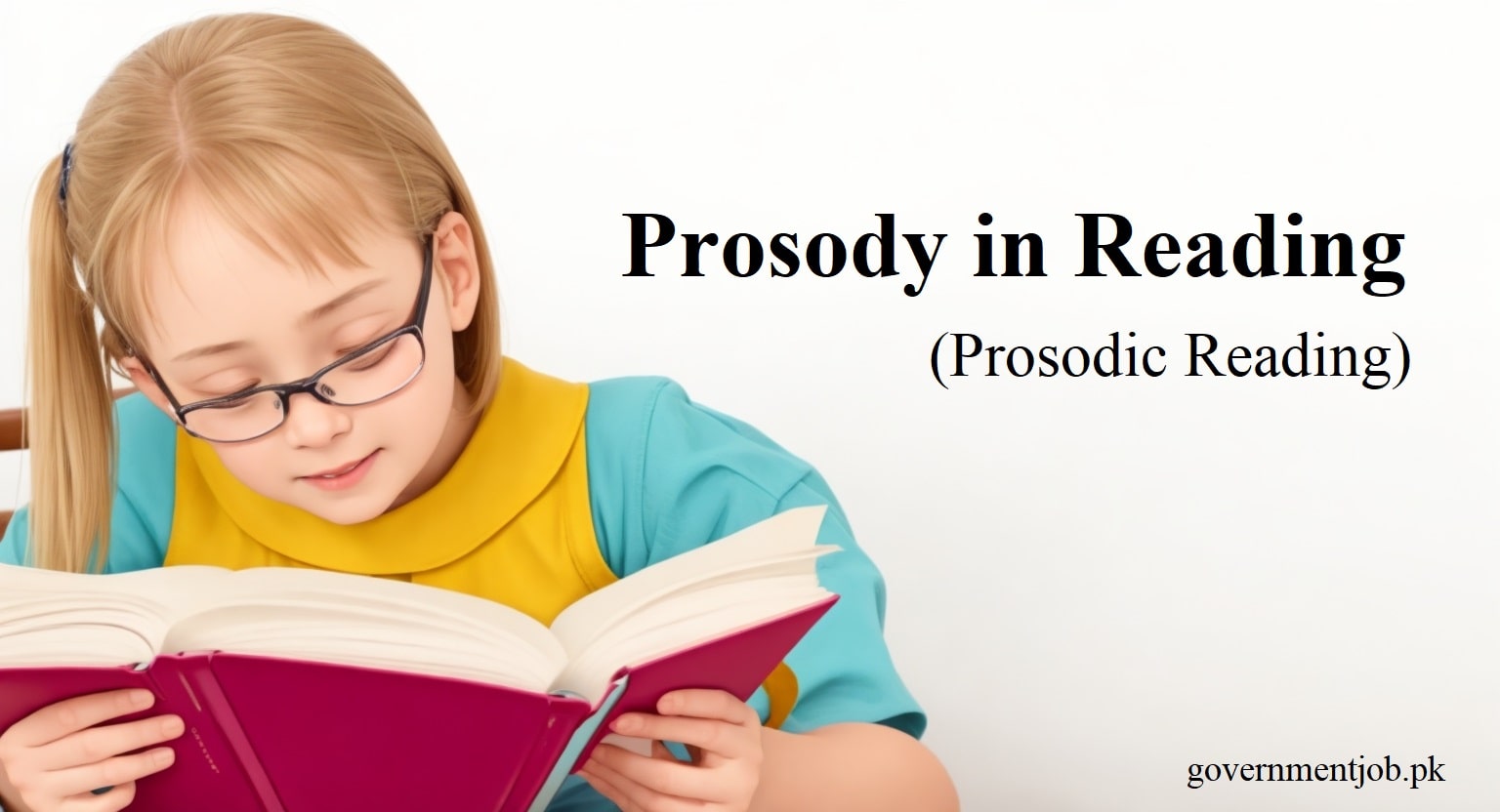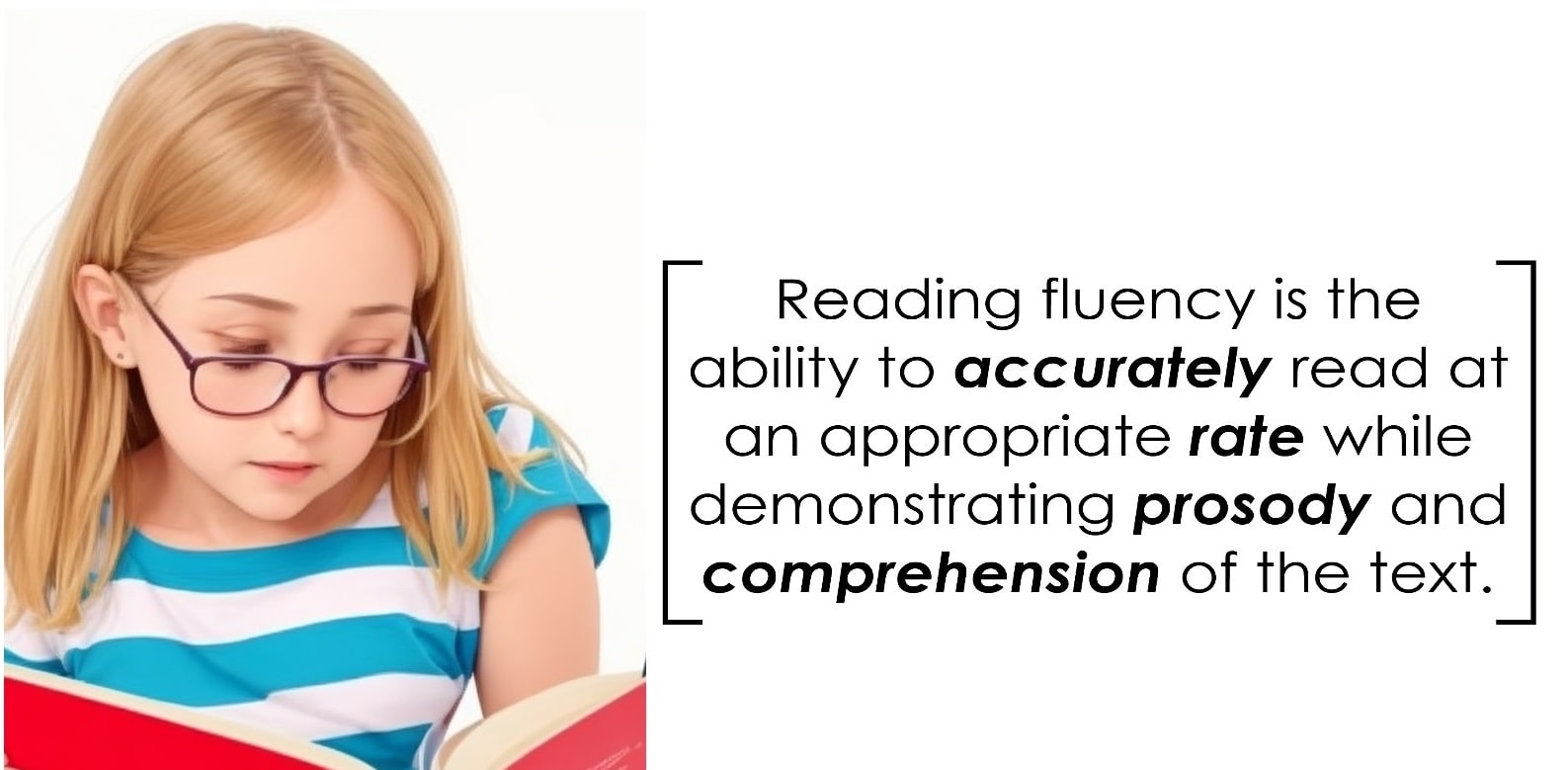
Reading fluency is more than just decoding words and comprehending their meanings; it also incorporates rhythm, stress, intonation, and pauses, all of which comprise a feature known as “prosody.” Prosody in reading, which is often underestimated, plays an important part in building successful and expressive readers, comprehension skills, and a love of reading.
What is Prosody in Reading?
Prosody in reading refers to the melodic and rhythmic characteristics of language that influence how words and sentences are articulated vocally. Pitch, pace, volume, phrasing, and emphasis are all examples of characteristics. Prosodic reading displays a reader’s ability to read aloud with expression, similar to how individuals speak spontaneously.
For example, we do not speak in a monotone or at the same rate throughout a conversation. Depending on the situation, we raise or drop our voice, emphasise certain words, and employ pauses for effect. Prosody applies these similar elements to reading, assisting the reader in effectively conveying the content and emotion of the text.
Importance of Prosody in Reading
Reading with expression, also known as prosodic reading, is frequently regarded as an indication that a kid has attained reading fluency. A child’s oral reading closely resembles natural speech when they read with prosody 01. It is distinguished by proper pauses, emphasis on the relevant words, and appropriate fluctuations in pitch and tone, all of which contribute to overall expressiveness (Stahl & Kuhn, 2002).
Prosody is critical for many reasons.
- Reading Comprehension: Prosody aids in understanding the text’s meaning by providing clues about sentence structure and highlighting essential words or phrases. It can also convey the speaker’s attitude or emotional state, which may not be immediately apparent from the words alone.
- Reading Fluency: Fluent readers recognize words and phrases quickly, read at a reasonable speed, and use prosody to reflect the text’s punctuation, structure, and mood. Prosody is thus a critical aspect of reading fluency.
- Engagement and Enjoyment: Reading with prosody can make the experience more engaging and enjoyable. It can bring characters and stories to life, fostering an emotional connection with the text.
How to Teach Prosody in Reading
Teaching prosody in reading is about encouraging students to read aloud expressively, mimicking natural speech’s rhythm and intonation.
Here are some strategies:
- Model Expressive Reading: The teacher should regularly model reading with prosody. This could include reading a passage with appropriate expression, tone, and rhythm, and discussing why certain choices were made.
- Echo Reading: In this activity, the teacher reads a sentence or a short passage with appropriate prosody, and the student mimics or “echoes” it. This allows students to practice prosodic reading with a clear model.
- Repeated Reading: Students read the same passage multiple times, aiming to improve their prosody with each iteration. This can help them build fluency and confidence.
- Performance Reading: Students can prepare a piece of text, like a poem or a script, to be read or performed in front of the class. This encourages them to think about how their voice can best express the text’s meaning and emotion.
- Prosody Discussion: Discuss the choices an author makes regarding punctuation, phrasing, and language, and how these should affect a reader’s prosody.
Prosody in Reading Examples
Let’s consider an example sentence: “Really? He won the lottery?”
Read flatly, the listener might not grasp the speaker’s disbelief. However, by raising the pitch at the end of the first word (“Really”) and stressing “won” and “lottery” in the second sentence, the speaker’s surprise becomes clear. Prosodic cues like these can drastically affect a sentence’s interpretation.
here are five examples illustrating prosody in reading:
- Question Intonation: Consider the sentence, “Are you going to the park?” When read with proper prosody, the pitch of the voice should rise at the end, signifying that it’s a question.
- Expressing Emotion: Let’s take the sentence, “I can’t believe he ate the whole cake!” In expressive reading, the reader might stress the word “whole,” showing surprise at the amount eaten. The pitch may also rise on “can’t believe” to emphasize disbelief.
- Signifying Importance: In the sentence, “The treasure is buried under the old oak tree,” stressing the words “treasure,” “buried,” and “old oak tree” signifies their importance.
- Pause for Effect: Consider the sentence, “He opened the door… and there stood a tiger!” The pause (represented by the ellipsis) creates suspense, mimicking the surprise the character would have felt.
- Changing Pace for Mood: In a suspenseful part of a story, such as, “She crept down the dark hallway, hearing strange noises coming from the end of the corridor,” a reader might slow down their pace to match the suspenseful mood of the scene.
These examples demonstrate how prosody can impact the way text is interpreted and how its meaning can be enhanced by applying the appropriate pitch, volume, pace, and pauses.
Reading Prosody Activities
There are many activities that teachers can utilize to help students develop prosody:
- Reader’s Theater: This activity allows students to act out scripts, requiring them to use prosody to convey their characters’ emotions and intentions. It’s a fun way of getting students to think about how tone, pitch, and volume contribute to meaning.
- Poetry Recitation: Poetry is inherently rhythmic and expressive, making it a great tool for teaching prosody. Encourage students to read out poems, focusing on how the poem’s rhythm, stress patterns, and line breaks influence their reading.
- Choral Reading: In this group activity, students read a text together, aiming to unify their pace, rhythm, and expression. This can help students tune into prosodic cues as they try to match their peers’ reading.
- Phrase-Cued Reading: Teachers can prepare texts with marked phrases, encouraging students to pause naturally at the end of each phrase. This can help students develop a sense of phrasing and pause, important elements of prosody.
- Audio Book Analysis: Students can listen to professional audiobooks, paying attention to the reader’s prosody. Discussing the prosodic choices made by the professional reader can give students a deeper understanding of prosody.
Conclusion
Prosody is an integral part of reading that extends beyond the simple decoding of words. It brings the text alive, fosters comprehension, and instills fluency. By incorporating prosody in reading instruction, we can help students become more expressive readers, improve their understanding of text, and heighten their enjoyment of reading.
While it’s crucial to have a strong grasp of phonics and vocabulary for successful reading, we must not overlook prosody’s significant role. Prosody in reading is an essential bridge that connects the reader with the writer, the text, and its deeper meanings. As educators, we must build this bridge for our students so they can cross into the world of fluent and expressive reading.


